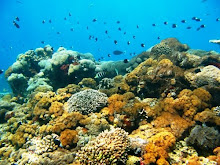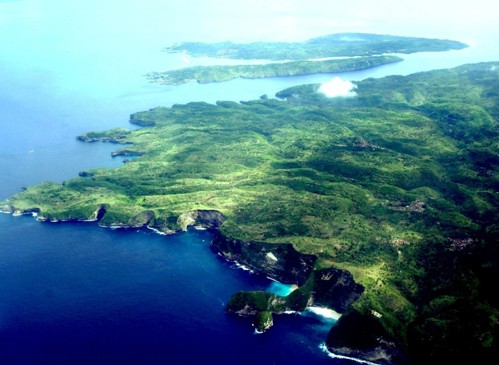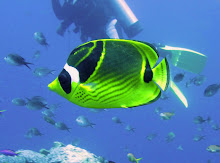MOLA MOLA (SUNFISH) IN NUSA PENIDA
The Mola Mola (sunfish) is Nusa Penida’s underwater icon. Mola Mola is a unique and rare fish that appears between July and September every year at several dive spots in Nusa Penida, a small island off the coast of Bali. With an average length of two meters, rounded tail and long fins, the Mola Mola looks like something out of Jurassic Park. That is why many divers from around the world come to dive at Nusa Penida during the Mola Mola season.
Text and Photos by Marthen Welly, The Nature Conservancy (TNC)
Mola Mola is a deep sea fish found at a depth of about 300 meters that comes to the coral reefs in more shallow water to clean its body of parasites with the help of reef fish such as angelfish and banner fish. The other reason Mola Mola comes to shallow water is to get sunlight –- hence its name — because of being too long in the dark and deep sea. Actually, Mola Mola’s habitat is any tropical sea, but it is only at Nusa Penida that its appearance can be predicted.
The best time for spotting Mola Mola is in August. Several dive spots like Crystal Bay, Blue Corner, Ceningan Wall, Batu Abah and Sental are cleaning stations for Mola Mola in Nusa Penida. Sometimes there are more than one hundred divers and 30 speedboats in any one dive spot at a time to see the Mola Mola. The presence of so many divers and boats naturally will disturb the Mola Mola as well as other marine life.
Furthermore some divers who don’t have an environmental friendly perspective come too close to the Mola Mola while taking pictures, with some even trying to touch and hold the giant fish. Several dive operators say that formerly we could find the Mola Mola at 15-20 meters, but now they are found at about 30 – 40 meters. We need to regulate how Mola Mola is observed say dive operators who care about the Mola Mola as a vital tourist asset.
The other threat to the Mola Mola is rubbish that is thrown into the sea, especially plastic. The Mola Mola will eat the plastic as it looks like jelly fish, which is what it eats. Sometimes they are also caught in fishermen’s nets. If care is not taken this stunning marine creature which is one of the vital assets of the marine tourism industry in Bali will disappear from Nusa Penida’s waters.
The Nature Conservancy (TNC) Indonesia Marine Program with partners such as the Klungkung District Government, local community groups, dive operators, universities and NGOs, are working in Nusa Penida to establish a marine protected area (MPA), which will protect the Mola Mola’s habitat. The goals of the Nusa Penida’s MPA are to conserve Nusa Penida marine biodiversity, to sustain marine tourism and fisheries.
A code of conduct for marine tourism will be developing included for watching the Mola Mola and the graceful Manta Ray. Talking to fishermen and explaining to them how important the Mola Mola is for their income is ongoing, so that the Mola Mola will still remain in Nusa Penida waters and sustain the livelihood of the local community through sustainable marine tourism. [NOW]
http://www.nowbali.co.id/Features/










Tidak ada komentar:
Posting Komentar